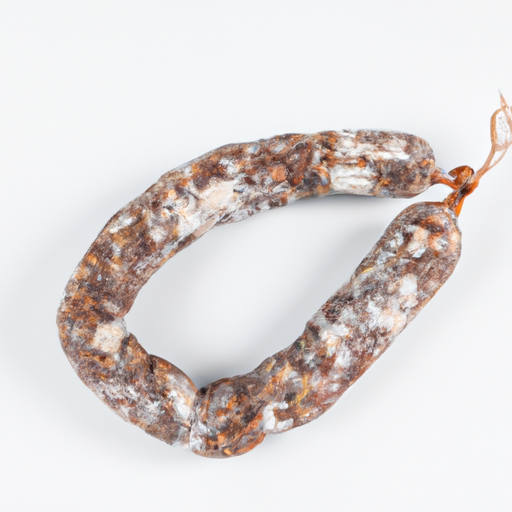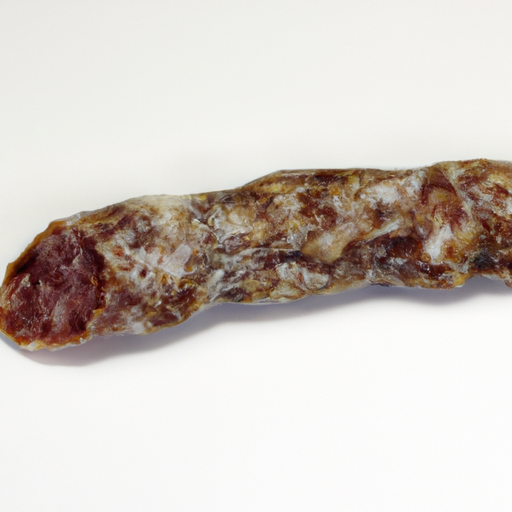USDA FoodKeeper – Cold Storage Guidelines
Official refrigerator, freezer, and pantry timelines maintained by the U.S. Department of Agriculture.
Visit USDA FoodKeeperWhen you indulge in the bold flavors of Abruzzese sausage, you're not just savoring a delicious treat; you're also enjoying a piece of Italian culinary tradition. To keep its rich taste and texture at their best, proper storage in the fridge for up to 21 days is key, as consuming it beyond that can pose health risks. Enjoy this medium-risk delight while it’s fresh for the ultimate experience!
"According to USDA guidelines, opened Abruzzese sausage should be stored in the refrigerator at or below 40°F and consumed within 3 to 4 days for optimal quality and safety."


Fridge
34-40°F (1-4°C)
Wrap tightly in plastic wrap or aluminum foil. Store in airtight container. Keep in coldest part of refrigerator.
21 days
60 days
Off odor, sliminess, discoloration, mold growth, rancid smell, unusual texture changes, white or gray spots
Add to pasta dishes, pizzas, sandwiches, or chop for salads
Other dry Italian sausages, pepperoni, salami
The expiration date on Abruzzese sausage indicates the date until which the product is expected to remain safe to consume. However, the best quality of the sausage may start to decline before the expiration date due to factors like oxidation, flavor degradation, and texture changes. It is recommended to consume the sausage before the best quality date for optimal taste and texture, but it can still be safe to eat beyond that as long as it has been stored properly and shows no signs of spoilage.
To determine if Abruzzese sausage has gone bad, look for any mold, slimy or discolored spots on the surface. Check for a sour or unpleasant odor, as well as any signs of a slimy or mushy texture. If you notice any of these indicators, it is best to discard the sausage to avoid consuming spoiled food.
Abruzzese sausage, like any other meat product, can pose foodborne illness risks if not handled and stored properly. It is important to ensure that the sausage is cooked to the recommended internal temperature of 160°F (71°C) to kill any harmful bacteria such as Salmonella, E. coli, and Listeria. Cross-contamination should be avoided by keeping raw Abruzzese sausage separate from other foods, especially ready-to-eat items. Refrigerate any leftovers promptly to prevent bacterial growth.
To prolong the shelf life and maintain the quality of Abruzzese sausage, it is recommended to store it in the refrigerator at a temperature below 40°F (4°C). If the sausage is unopened, it can be kept in its original packaging or transferred to an airtight container to prevent exposure to air and moisture. Once opened, wrap the remaining sausage tightly in plastic wrap or aluminum foil before refrigerating. For longer storage, consider freezing the sausage, ensuring it is well-sealed to prevent freezer burn. Thaw frozen sausage in the refrigerator before consuming for best results.
Abruzzese sausage originates from the Abruzzo region in Italy, known for its rich culinary traditions. This type of sausage is typically made with a blend of pork, salt, pepper, and various spices like fennel seeds and chili flakes, giving it a distinct flavor profile. It is often enjoyed grilled, fried, or added to pasta dishes, showcasing the versatility of Italian cuisine. In Abruzzo, sausage-making is a time-honored tradition passed down through generations, reflecting the region's dedication to preserving its culinary heritage.
Once opened, Abruzzese Sausage Dry typically stays fresh for up to 7 days in the fridge. After this period, it's best to discard it to prevent foodborne illnesses, even if it looks and smells fine.
Abruzzese Sausage Dry should not be left at room temperature for more than 2 hours. If it exceeds this timeframe, it's safer to discard it to avoid potential contamination and foodborne illnesses.
The type of container can impact the shelf life of Abruzzese Sausage Dry. It's best to store it in airtight containers to maintain freshness and prevent contamination. Avoid storing it in open containers where it's exposed to air and other odors.
Avoid storing Abruzzese Sausage Dry next to other raw meats to prevent cross-contamination. Keep it separate or in a sealed container to avoid the spread of bacteria from raw meats to the sausage.
Freezing Abruzzese Sausage Dry can alter its texture slightly upon thawing. It may become slightly drier or have a different mouthfeel. To minimize texture changes, wrap it tightly in freezer-safe packaging and thaw it slowly in the fridge before consumption.
Shelf life can vary between different brands of Abruzzese Sausage Dry. Always refer to the manufacturer's guidelines on the packaging for the most accurate information on storage and expiration dates.
Cooking Abruzzese Sausage Dry can extend its shelf life by a few days, but it's essential to store any cooked portions properly in the fridge and consume them within the recommended time frame to ensure food safety.
Abruzzese Sausage Dry typically lasts longer in cooler temperatures, such as winter, compared to summer. High temperatures can accelerate bacterial growth and spoilage, shortening its shelf life. Store it in the coldest part of the fridge for extended freshness.
When transporting Abruzzese Sausage Dry for an extended period, use a well-insulated cooler with ice packs to maintain a safe temperature below 40°F (4°C). Avoid leaving it exposed to direct sunlight or high temperatures during transit to prevent spoilage.
Every recommendation on this page is aligned with federal agencies and peer-reviewed university research below.
Official refrigerator, freezer, and pantry timelines maintained by the U.S. Department of Agriculture.
Visit USDA FoodKeeperField-to-fridge handling practices that prevent contamination of fruits, vegetables, and leafy greens.
Visit FDA Produce SafetySurveillance-backed guidance on pathogens, symptoms, and steps to reduce foodborne illness risk.
Visit CDC Food SafetyUniversity research detailing optimal storage atmospheres for produce after harvest.
Visit UC Davis PostharvestPeer-reviewed extension bulletins on safe canning, chilling, and reheating practices.
Visit Penn State ExtensionNeed deeper reading? Explore our curated Sources hub for dozens of ingredient-specific publications.
Scan your food directly and get instant safety info using our AI-powered camera feature.
Ready-to-Eat Meals
View expiration date and storage guide →
Fruits & Vegetables
View expiration date and storage guide →
Herbs and Fresh Produce
View expiration date and storage guide →
Beverages
View expiration date and storage guide →
Beverages
View expiration date and storage guide →
Cooking Ingredients
View expiration date and storage guide →
Fruits & Vegetables
View expiration date and storage guide →
Dairy Products
View expiration date and storage guide →
Breakfast Foods
View expiration date and storage guide →
Important: These are general guidelines based on authoritative sources listed above. Always use your best judgment and when in doubt, throw it out. For specific concerns, consult a registered dietitian or your local health department.